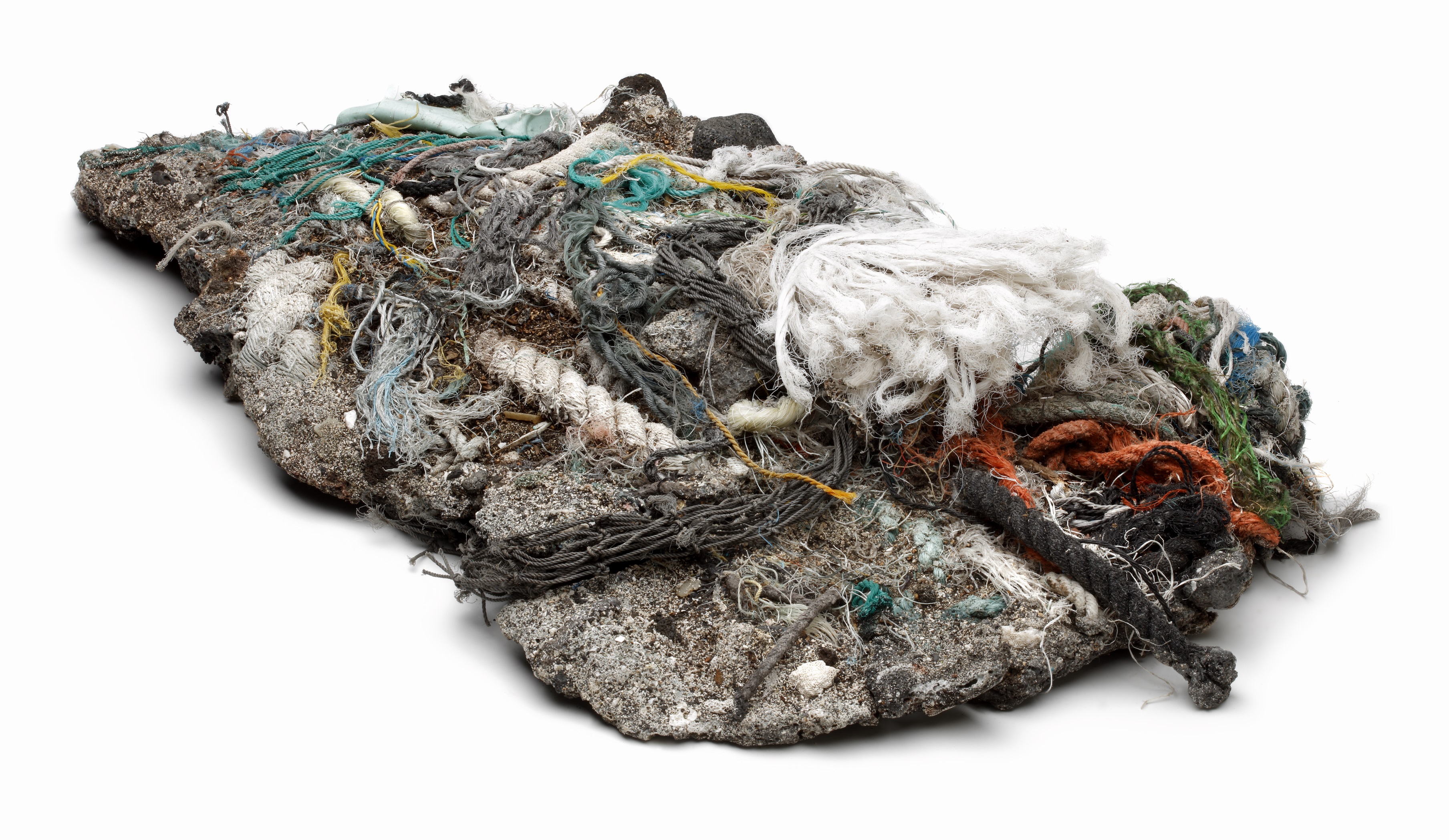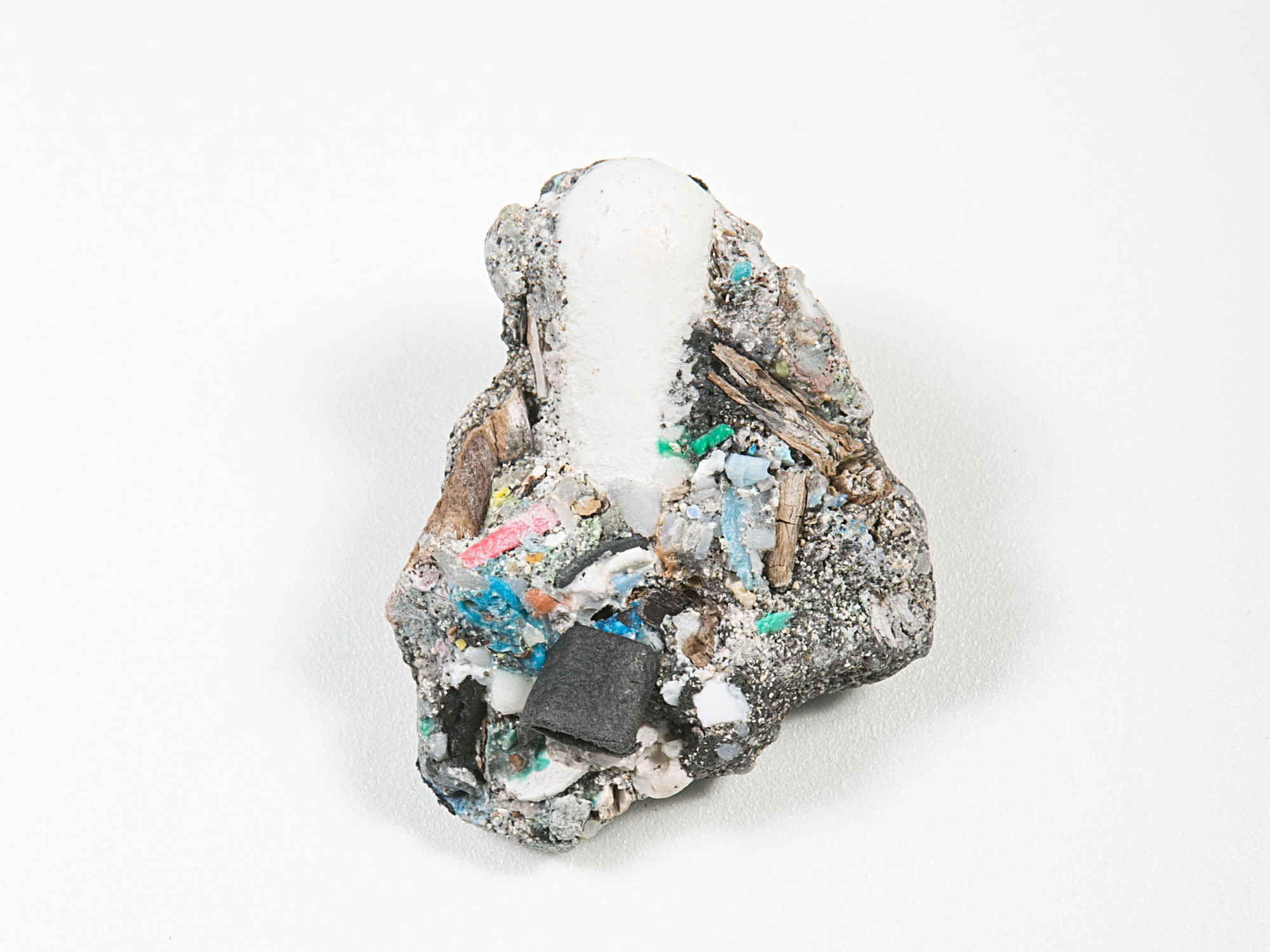The Luckless Garden

FIG. 4: Museon. 2012. Plastiglomerate. Https://Www.Museon.Nl/Nl/Globeitem/Plastiglomeraat.
Stories from the pioneering age made it seem as if it was humanity’s destiny to endlessly plunder the natural environment, continually converting animals, plants, and rocks into extensions of ourselves. In retrospect, these stories, which center in the West on the previously addressed monotheistic conceit that humanity is the main benefactor off all of God’s creation, were a rallying cry for nomadic tribes. Said tribes have however become, for the most part, sedentary. No longer nomadic. Nonetheless, as often happens in cultural evolution, information continues to flow long after it is useful. This data lag has had a profound effect on the way humans have lived and cultivated their environments.
Today, as a global population, we produce approximately 1.3 billion tons of municipal solid waste per year, waste which English Literature professor Brian Thill claims,

FIG. 4: Patricia Corcoran, Kelly Jazvac, and Kelly Wood. 2012. Plastiglomerate Sample. Http://Www.Kellyjazvac.Com/Stones/Stones.Html. Ready Made, Collected by geologist Patricia Corcoran and sculptor Kelly Jazvac at Kamilo Beach, Hawai’i, 2012. Photo: Kelly Wood.
We have come so far from the original purity of the Garden. Could a place like Eden ever exist again?
Geologically and ecologically, humans have completely influenced the planet. The air that we breathe and every millimeter of terra have been influenced by us.
In almost ironic opposition however, the theme of Adam and Eve’s living in nature as living in an uncultivated forest recall of the myth of the ‘good savage’, of man’s innocent existence before civilization corrupted him through economy and politics. This is a recurring trope that seems to re-emerge regularly, upheld through the works of the philosophers, from Rousseau to Thoreau’s Walden, John Muir, on to the neo-primitivist and anarchist hypotheses of John Zerzan and into artistic movements such as the Romantic Movement and the ‘Plein Air’ movement of the impressionists, to name a few.
All seem to recall this long lost, better existence before society’s (wanted or not) rejection of a humble life in the natural world for the unnecessary extravagances of the capitalist system. The human drive for Culture supposedly emerged from Nature but these two constructs embody contradictory notions: nature equals chaos whereas culture equals order. Culture is both literally and metaphorically a step ahead of nature, and yet the human being—the romantic human being—seeks to return to it from time to time.
14 Rousseau, Ina. 2020. “Eden.” Poetry Magazine. 2020. https://www.poetryfoundation.org/poetrymagazine/poems/49319/eden-56d22b4995df2.
15 Twemlow, Dr. Alice. 2019. “Design and the Deep Future, 2019-2020 - Studiegids - Universiteit Leiden.” Universiteitleiden.Nl. 2019. https://studiegids.universiteitleiden.nl/courses/97011/design-and-the-deep-future.